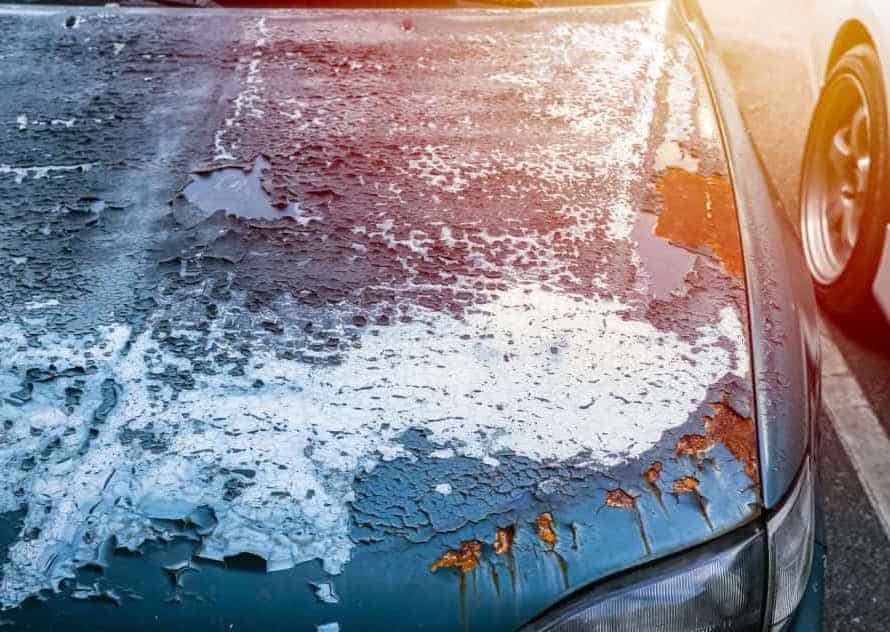Protecting Your Solid Car Paint from Sun and UV Damage
Your car’s paint job is not just for aesthetic purposes; it also serves as a protective layer against various environmental factors, including the damaging effects of the sun and UV radiation. Sunlight and ultraviolet (UV) rays can cause your car’s paint to fade, crack, and peel over time. To keep your car looking its best and maintain its value, it’s essential to take steps in protecting your solid car paint from sun and UV damage. In this article, we’ll explore the various ways you can safeguard your solid car paint from these harmful elements.

Understanding Sun and UV Damage
Sun and UV damage occurs due to the exposure of your car’s paint to the sun’s intense rays and the ultraviolet radiation present in sunlight. While modern automotive paints are more resilient than ever, prolonged exposure to UV radiation can lead to several issues:
- Fading: UV rays can cause your car’s paint to lose its color vibrancy over time, resulting in a faded, dull appearance.
- Oxidation: UV radiation can lead to the oxidation of the clear coat and paint, making it appear chalky and reducing its protective properties.
- Cracking and Peeling: Prolonged UV exposure can cause the paint and clear coat to become brittle, leading to cracks and peeling.
- Degraded Resale Value: Sun and UV damage can significantly reduce the resale value of your car, making it crucial to protect your investment.
Read more: Restoring The Shine: T-Cut For Oxidized Paint Restoration
Ways to Protect Your Solid Car Paint
Regular Washing and Waxing:
Regularly washing your car with a high-quality car wash soap and applying wax or sealant is one of the simplest and most effective ways to protect your car’s paint. Wax and sealant create a protective barrier that shields the paint from UV radiation and other environmental contaminants.
Park in Shade:
Whenever possible, park your car in the shade to reduce its exposure to direct sunlight. Using a car cover or parking in a garage will provide even better protection.
UV-Resistant Car Covers:
Invest in a high-quality, UV-resistant car cover. These covers are designed to protect your car from the sun’s harmful rays while also preventing dust and debris from settling on the paint.
Window Tinting:
Tinting your car windows can help reduce the amount of UV radiation that enters the vehicle’s interior. It also provides some protection for the exterior, particularly for the areas near the windows.
Paint Protection Film (PPF):
Consider applying a paint protection film (PPF) to high-impact areas, such as the front bumper, hood, and side mirrors. PPF is a transparent, self-healing film that offers excellent UV protection and safeguards against stone chips and minor abrasions.
Regular Maintenance:
Keep up with regular maintenance, such as fixing stone chips, scratches, and dings. These blemishes can allow UV radiation to penetrate the paint, causing further damage.
Ceramic Coating:
Ceramic coatings are advanced protective solutions that provide a durable shield against UV radiation and other environmental factors. They create a hydrophobic surface that repels water and contaminants, making your car easier to clean and maintain.
Keep it Clean:
Remove bird droppings, tree sap, and insect residue promptly, as these can damage the paint and accelerate the effects of UV radiation.
Read more: Preserving Classic Beauty: The Role Of Immobilizers In Protecting Classic Cars
FAQs
1- Why is it important to protect my car’s paint from sun and UV damage?
Sun and UV damage can cause your car’s paint to fade, crack, and peel, which not only diminishes its appearance but also reduces its resale value. Protecting Your Solid Car Paint helps maintain its aesthetic appeal and overall condition.
2- How does the sun and UV radiation damage car paint?
UV rays can cause the paint to fade and the clear coat to oxidize. Prolonged exposure may also lead to cracks and peeling in the paint and clear coat.
3- What is the best way to protect my car’s paint from UV damage?
The most effective ways to protect your car’s paint from UV damage include regular washing and waxing, parking in the shade, using UV-resistant car covers, window tinting, and applying paint protection film or ceramic coatings.
4- Can a regular car cover protect my car’s paint from UV damage?
While a regular car cover provides some protection, it’s advisable to invest in a UV-resistant car cover designed specifically to shield your vehicle from UV radiation. These covers offer enhanced UV protection.
5- What is the difference between wax and sealant for Protecting Your Solid Car Paint from UV damage?
Both wax and sealant create a protective layer, but sealants generally offer longer-lasting protection. They are more durable and better equipped to shield your car’s paint from UV radiation and other environmental factors.
6- Do I need professional help to apply a ceramic coating to my car’s paint?
While it’s possible to apply a ceramic coating yourself, many car owners prefer professional application for the best results. Professional detailers have the expertise and tools to ensure an even and durable coating.
7- How can I repair sun and UV damage to my car’s paint?
Repairing extensive sun and UV damage often requires repainting the affected areas, which can be costly. It’s best to prevent such damage through proactive protection rather than trying to fix it after the fact.
8- Is there a way to protect the interior of my car from UV radiation?
Yes, you can protect the interior of your car from UV radiation by using window tinting and installing sunshades on your car’s windshield and side windows. Tinted windows can significantly reduce the amount of UV radiation that enters your vehicle.
9- How often should I wash and wax my car to protect it from UV damage?
Washing and waxing frequency depends on various factors, such as your climate and driving conditions. However, a general guideline is to wash your car every two weeks and apply wax or sealant every three to six months.
10- Are there any DIY methods for Protecting Your Solid Car Paint from UV damage?
Yes, you can protect your car’s paint from UV damage by following DIY methods like regular washing and waxing. However, for more advanced protection, such as applying ceramic coatings or paint protection film, it’s advisable to seek professional assistance.
Conclusion
Protecting your solid car paint from sun and UV damage is essential to maintain the appearance and value of your vehicle. By following these preventative measures and investing in protective products and services, you can ensure that your car’s paint remains vibrant and in good condition for years to come. Remember that prevention is always more cost-effective than attempting to repair extensive sun and UV damage, so start Protecting Your Solid Car Paint today.

